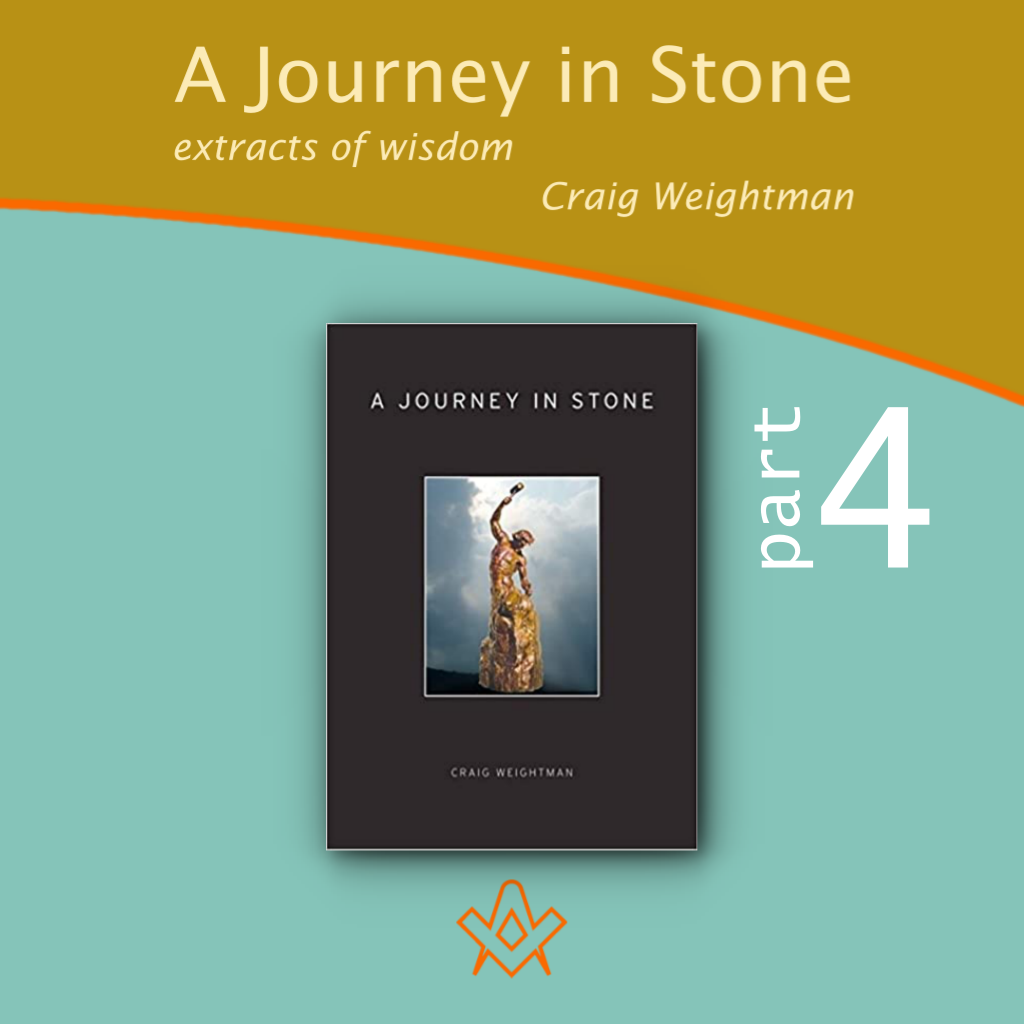For those who have enjoyed Craig Weightman’s thought-provoking and inspiring monthly features, this book collates his collective wisdom and philosophy, taking you on a fascinating ‘journey in stone’.
Over the next months, we will feature select extracts from ‘A Journey in Stone’ – if you enjoy these, please support Craig’s work by buying a copy.
“This book is the result of years of exploration by myself since I joined the Order of Freemasons in 2004. After following an identical story to the one expressed at the beginning of this preface, I found the process of initiation a truly transformative process.”
Craig Weightman.
A Journey in Stone
Edited and abridged from Chapter 3 – The Working Tools of the First Degree

24inch gauge
IMAGE LINKED: freimaurer-wiki.de Attribution 4.0 International (CC BY 4.0)
The First Degree in Freemasonry is called the Entered Apprentice Degree. This is the Candidate’s first experience of the Masonic tradition of initiation and is designed to introduce the Initiate to the life of a Mason.
When beginning their Masonic career, the Candidate has no idea what awaits them through the closed doors ahead of them. When they are admitted through the lodge doors for the first time, they are beginning a new chapter of their life.
Initiation literally means beginning. The way of life the Candidate has passed through before is coming to a close, and a new way is about to begin.
The majority of Freemasonry does not take place in the lodge room; instead, its teachings are meant to be carried over by the Candidate into their ordinary life, so that they can live out in practice the principles they are introduced to.
It is hoped that, as the Freemason practices the principles in life, they will slowly become conscious of their true meaning.
As part of the First Degree initiation ceremony, the Candidate will be presented with the working-tools of that Degree.
There are three tools in total in this Degree, namely the twenty-four-inch gauge, the common gavel, and the chisel.
As with the other working-tools in the other Degrees, these tools are commonly used in actual stone working, but they are meant to have a symbolic meaning.
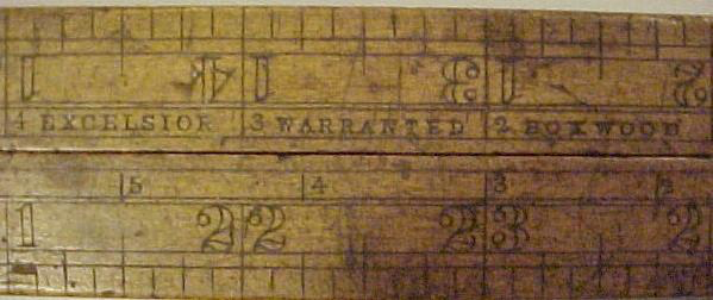
24inch gauge
IMAGE LINKED: freimaurer-wiki.de Attribution 4.0 International (CC BY 4.0)
The first of these tools, the twenty-four-inch gauge, is essentially a straight edge that enables the stonemason to measure lengths and draw lines for cutting.
It is specifically twenty-four inches in length because it is meant to represent the twenty-four hours of the day. Symbolically it is meant to represent time well spent.
As human beings, we all have a limited time on Earth. It is important, therefore, that we make the most of this time.
From a selfish point of view, this might be taken to mean that we should cram in as much experience as possible before we die. However, this is not the entire message taught by the gauge.
The experiences of life are an important part of enjoying life, but true happiness comes from living a balanced life.

Photo by Nathan Dumlao on Unsplash Attribution 4.0 International (CC BY 4.0)
Living a balanced life means taking care of your mental, spiritual, and physical needs. Therefore, the twenty-four-inch gauge teaches that time should be broken up into three distinct but not necessarily equal partitions.
Our days should be spent sharing time between attending to our spiritual needs or meditation, our physical needs, and our need to seek a purpose through extending help to others.
The first of these, the spiritual aspect, is defined differently from person to person. No matter what the spiritual background of an individual, our spirit can be defined as that part of us that appears to be experiencing this life.
It is our very seat of consciousness. This conscious awareness is our point of contact with everything. It is the ultimate receiver of the information coming through our senses, and it also experiences the thoughts going on inside our head.
All of this could be interpreted as some trick of the brain, but things don’t seem to be that simple. The nature of experience is a very mysterious thing, and we can demonstrate this by some very simple exercises.
One such simple exercise is to try to describe to someone what your experience of the colour red is like. You could point to all the red things around you and say ‘that is red’, but this is all you can do.
You can have no idea if another person in the room experiences the same ‘red’ as you do. Other people can agree that you are pointing at a red object, but the only thing you know for certain, is that they learned to call that colour red, just as you did.
They might be actually experiencing something quite different to you, but may still call it red. The question arises: what is colour?
Of course, we could answer this question by stating that each colour is a different wavelength of light energy, but this fails to explain what the actual experience of colour is.
To further drive this point home, and to look at it from a different angle, try to imagine an apple.
If I was to monitor your brain whilst you were thinking this, I could identify all of the neurone-firing that is associated with this particular thought.
However, I would not see the apple you are seeing in your head. Where then does the image you can see reside exactly? How do the firing neurones become the image, and where are you seeing the image itself? These questions are difficult if not impossible to answer.
They do demonstrate however, the mystery of being, and this mystery is our spiritual aspect.

Photo by Mitchell Hartley on Unsplash Attribution 4.0 International (CC BY 4.0)
Spending time contemplating our spiritual aspect can generate valuable personal insights as to our connection with everything else, and can happen in various forms.
For those with a particular religious faith it means attending to the duties of that individual religion, like praying, meditating, or studying scripture for deeper insights. For those with no particular religious faith, it means contemplating the spirit in your own individual way.
Attending to our spiritual needs often has beneficial effects. When most people truly contemplate the potential spiritual dimension of the Self, it can often give life more colour and context.
Abraham Maslow identified a state of mind called the ‘peak experience’, which is defined as a moment of clarity where everything seems to make sense and a deep connectedness with everything is felt. Unfortunately, the peak experience is momentary, and the state is quickly forgotten.
Those who have reported a peak experience have claimed they felt that they momentarily had a glimpse of some knowledge, but that they can’t remember what it was.
They only experience the deep sense of peace that came from being in this state. Returning to the peak experience is rare, but Maslow theorised that it could be cultivated and possibly extended into a desirable ‘plateau experience.’
This, then, is the aim of spiritual practice: to cultivate peak experiences so that we might hope to live from a place of deep insight, wisdom and peace.

Photo by Timon Studler on Unsplash Attribution 4.0 International (CC BY 4.0)
The second of the three aspects of life symbolised by the twenty-four-inch gauge is concerned with the material nature of life, which deals with labour and refreshment. To be happy, a person needs to take care of all their physical needs.
These needs require the spending of money, and this money usually comes from a job. It is important, therefore, to ensure that a percentage of one’s day is spent focused on the performance of one’s job.
Focusing on work and performing it well can usually help the progress of one’s career. The logical thing, when attempting to acquire better reward, is to ensure that you perform your tasks in an exemplary manner.
It is therefore important to make the constant improvement of your abilities at work your primary goal in your day-to-day business. The Freemason, then, is someone who takes the responsibility of a job well done seriously, but not only for remuneration.
It is just as important to the Freemason to ensure that they are providing a good service for its own sake.
Ensuring that other people are helped by the work that you do is central to a Freemason’s ethics.
This aspect of the lessons taught by the gauge is not however restricted to labour itself. It is also meant to show that refreshment is just as important as labour.
The old phrase ‘all work and no play makes Jack a dull boy’ is very true. A person cannot have a fulfilling life without taking part in things that they enjoy. Time should be spent relaxing, and ensuring that one is not unduly stressed by overwork.
We must take time to entertain ourselves and spend time with our friends and family. Without these essential things, we have nothing in life but work, and human beings are not simply drones who spend their entire lives in pure service.

Photo by Antonio Gabola on Unsplash Attribution 4.0 International (CC BY 4.0)
The final aspect of life to focus on, as taught by the gauge, is serving a friend or Brother in time of need.
As we have already seen, service is a very important part of a Freemason’s life, and they should be ready at all times to lend help where it is needed.
We all need each other, and the world would be a far more harmonious place if everyone was willing to lend a helping hand when required.

Photo by Austin Kehmeier on Unsplash Attribution 4.0 International (CC BY 4.0)
It is important to point out however that the help that is given should not be to the detriment of ourselves, our family or other connections.
It is not wise to sacrifice the comfort or happiness of yourself and the people closest to you when helping others.
The help you give to others should always come from a place of abundance. We can only freely give something when we have enough to give. If we give everything we have to someone else then we might help them, but we harm ourselves in the process.
Aid then, is only helpful if it’s not harmful to the person giving or the people who are relying on them.
The twenty-four-inch gauge, then, is about how we spend our time. It teaches that we should ensure that we attend to our needs and the needs of others, with the time that we have.
Reproduced with permission from the publisher Lewis Masonic. All rights reserved.
Follow Craig on Twitter: @WeightmanCraig
Read about Craig’s work as a Senior lecturer in Games and Visual Effects, Staffordshire University
https://theconversation.com/profiles/craig-weightman-430199/articles
Video Presentation
Article by: Craig Weightman

Craig Weightman grew up in Hinckley, Leicestershire and was educated at the University of Leicester, gaining a degree in Psychology and Computer Science.
He was initiated into Freemasonry in 2003, and became master of his lodge in 2014.
Outside of his interests in Freemasonry, Craig is a lecturer in Computer Games Design and Computer Science at a college in Warwickshire. He also develops websites for businesses.
Craig is the author of 'A Journey in Stone'.
 A Journey in Stone – Extracts of Wisdom p.10 More extracts of wisdom from Craig Weightman's book 'A Journey in Stone' – in this final part in the serialisation, we discover the Transformative Symbolism of the Royal Arch – and the end of the journey. |
 A Journey in Stone – Extracts of Wisdom p.9 More extracts of wisdom from Craig Weightman's book 'A Journey in Stone' – this month, we explore the 'Illusion of the Self and the Truth of Interdependency' |
 A Royal Reflection – the secrets of a successful Monarch On the death of Her Majesty Queen Elizabeth II, Craig Weightman, in a fitting tribute to an exemplar, recently departed, reflects on how the late Monarch's life demonstrated how we should all live every moment, as we serve others. A poignant reflection on a life that was resplendent in virtue, to the benefit of all, which is what Freemasonry attempts to teach us. |
 A Journey in Stone – Extracts of Wisdom p.8 More extracts of wisdom from Craig Weightman's book 'A Journey in Stone' – this month, we explore |
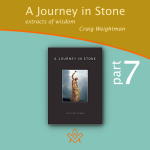 A Journey in Stone – Extracts of Wisdom p.7 More extracts of wisdom from Craig Weightman's book 'A Journey in Stone' – this month, we explore |
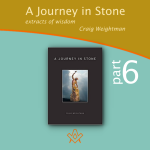 A Journey in Stone – Extracts of Wisdom p.6 More extracts of wisdom from Craig Weightman's book 'A Journey in Stone' – this month, we explore the Working Tools of the Third Degree. |
 A Journey in Stone – Extracts of Wisdom p.5 More extracts of wisdom from Craig Weightman's book 'A Journey in Stone' – this month, we explore the Working Tools of the Second Degree. |
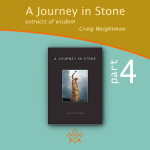 A Journey in Stone – Extracts of Wisdom p.4 The Working Tools of the First Degree – the twenty-four-inch gauge. This book collates masonic author and psychologist, Craig Weightman's collective wisdom and philosophy, taking you on a fascinating 'journey in stone'. |
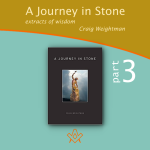 A Journey in Stone – Extracts of Wisdom p.3 This book collates masonic author and psychologist, Craig Weightman's collective wisdom and philosophy, taking you on a fascinating 'journey in stone'. |
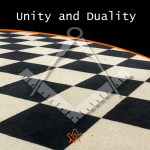 Craig continues his previous exploration into the 'hero's journey' through life's travails; this month we discover how within the stormy sea of battling opinion and confusion, there is an island called Freemasonry. |
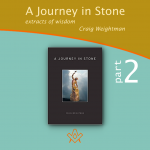 A Journey in Stone – Extracts of Wisdom p.2 This book collates masonic author and psychologist, Craig Weightman's collective wisdom and philosophy, taking you on a fascinating 'journey in stone'. |
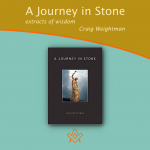 A Journey in Stone – Extracts of Wisdom p.1 For those who have enjoyed Craig Weightman's thought-provoking and inspiring monthly features, this book collates his collective wisdom and philosophy, taking you on a fascinating 'journey in stone'. |
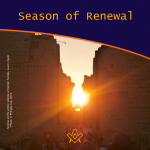 This spectacle takes place at the same time every year. Literally, the sun 'dies' for three days, then is reborn on the Christmas morning. |
 Coming to Terms with the Great War Within Ourselves Discover your 'shadow' - the black-and-white path to self-awareness - "A man who is possessed by his shadow is always standing in his own light and falling into his own traps...living below his own level." - Carl Jung |
 The Masonic Art of Being a Gentleman What defines the masonic art of being a gentleman; a chivalrous, courteous, or honourable man? |
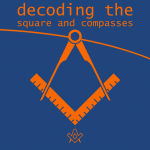 Decoding the Square and Compasses The square and compasses is the most famous symbol with which Freemasonry is identified. However, this is not just a logo that helps the organisation to stand out from the rest. |
 Each moment is a gift that you can make the most of. We can all do more; many of us do not live our lives to the full. |
 The hero’s journey can also be seen in the Masonic system; a candidate first considers embarking on the Masonic journey but wonders whether it is really for him |
 Those Talents Wherewith God Has Blessed You Incorporated in the charge to the initiate, has a lasting impression of what Freemasonry is all about. |
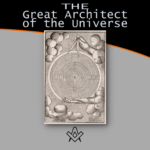 The Great Architect of the Universe When a candidate for 'Regular' Freemasonry is interviewed, prior to being admitted, he is always asked if he believes in a Supreme Being. |
masonic knowledge
to be a better citizen of the world
share the square with two brothers

click image to open email app on mobile device



